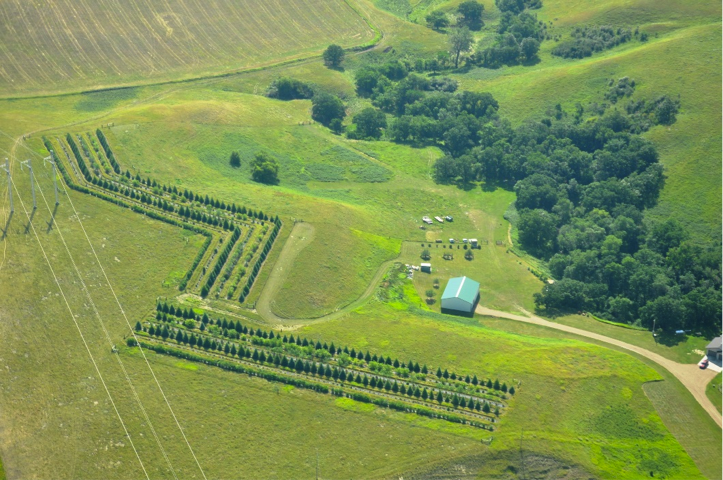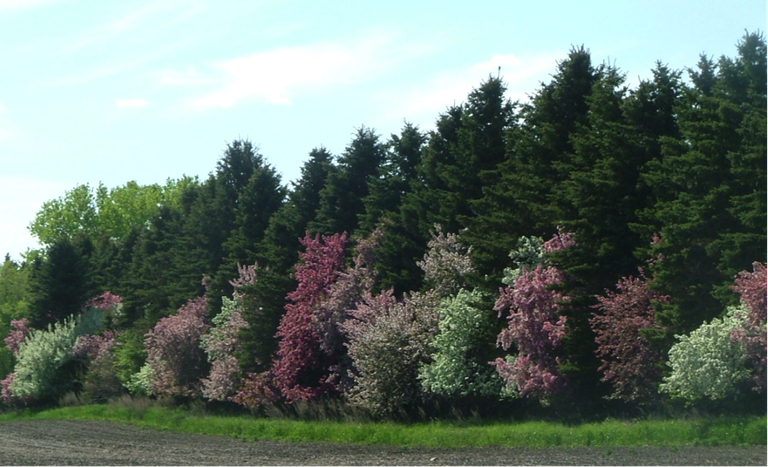Windbreaks are Multi-Functional Resources
They do more than slow the wind!
The past few weeks have brought much-needed moisture to North Dakota and it’s easy to forget about the recent threat of drought and images of blowing topsoil. North Dakota has a rich history of planting windbreaks, or shelterbelts, with hundreds of thousands of trees planted across 55,000 miles of our prairie state. Many of those plantings are in decline – trees don’t last forever. As an option to simply removing declining rows of trees, consider renovation of those plantings. Why should we care about investing in this resource?

Photo by Aaron Bergdahl, NDFS, 2014
- Protection from the wind. We cannot get away from this primary function of windbreaks, which is protection from cold winter winds, hot summer winds, and blowing and drifting snow. If your home is protected by tree cover, imagine how it would be without trees. If you’ve watched your child participate in a sporting event at a sports field that’s protected by trees, imagine how different your experience would be without trees.
- Lessen the effects of heavy precipitation events. A National Climate Assessment (2014) features a map showing increased changes in very heavy precipitation. Over the last 50 years, the Midwest shows an increase of 16% in extreme rainfall events. Trees can intercept rainfall, increase the amount of rain that filters into the ground, and reduce the quantity, speed and peak flows of runoff. Tree plantings can have positive effects at a watershed scale, even if planted in narrow upland strips or along riparian areas.
- Improve income. Fields with windbreaks can net yields with increases of 10 to 20 percent, whether grain, vegetable, hay or orchard crops. Livestock that benefit from protection of winter winds show improved weight gains with lower feed costs. Heating and cooling costs for our homes are decreased with windbreaks protecting from cold northwest winds, and shade trees in the yard.
- Enhance aesthetics. Last but not least, the appearance of our North Dakota landscape is enhanced by windbreaks. One of my favorite sights each spring is a 2-row windbreak along Highway 281 in Eddy County. For one short week in May, the crabapple trees burst into blossoms of white and shades of pink, in stark contrast to the deep green spruce trees that majestically stand behind them. To me, that annual expression of beauty is proof that the long winter is finally over.

Photo by Gerri Makay, NDFS, 2013
Windbreaks don’t just take up land that could be producing income. On the contrary, well-placed and well-designed windbreaks increase yields, save energy, protect soil, air and water quality, provide wildlife habitat, and beautify the landscape. Trees don’t cost – they pay us back.
For more information, please see:
- ND Forest Service: https://www.ag.ndsu.edu/ndfs
- National Agroforestry Center, Lincoln, NE: http://nac.unl.edu/index.htm
Gerri Makay
Community Forestry Program Manager, ND Forest Service


